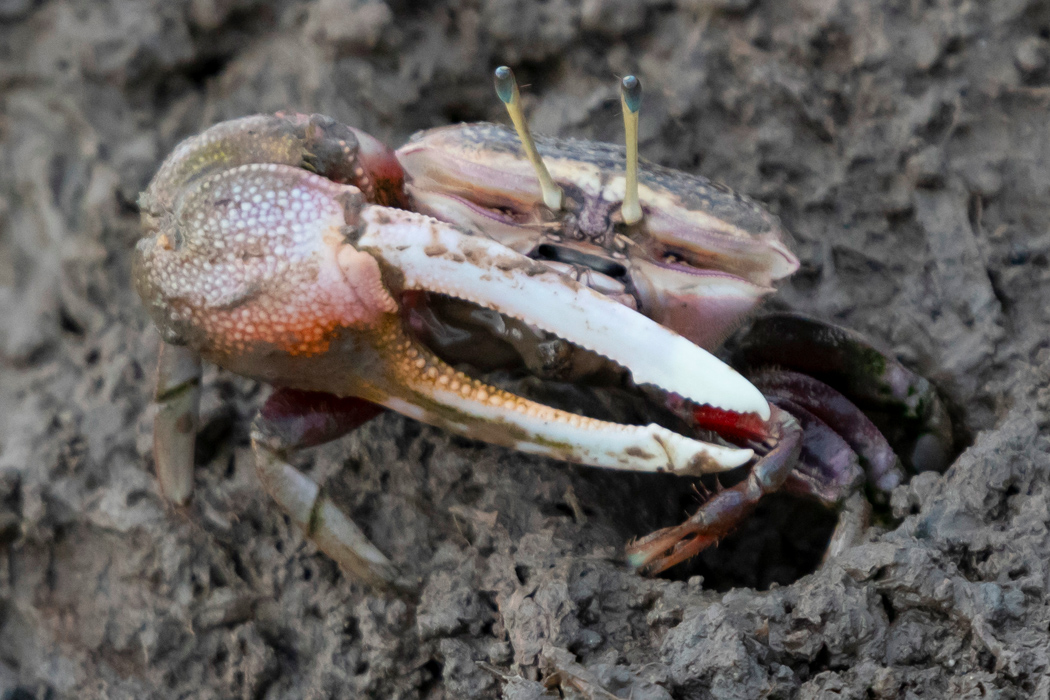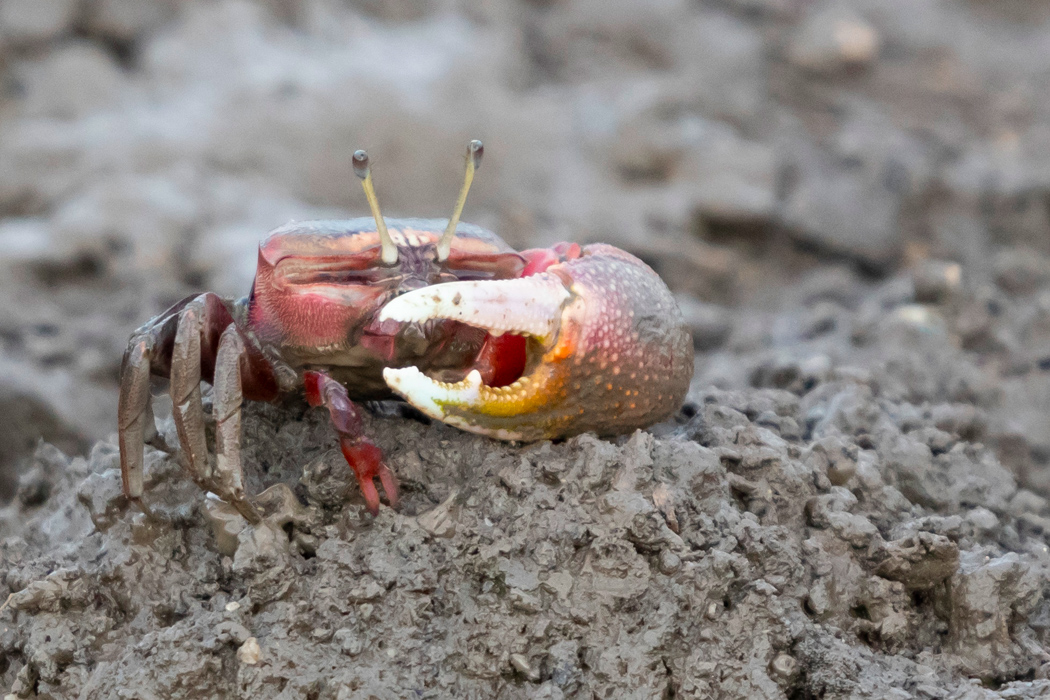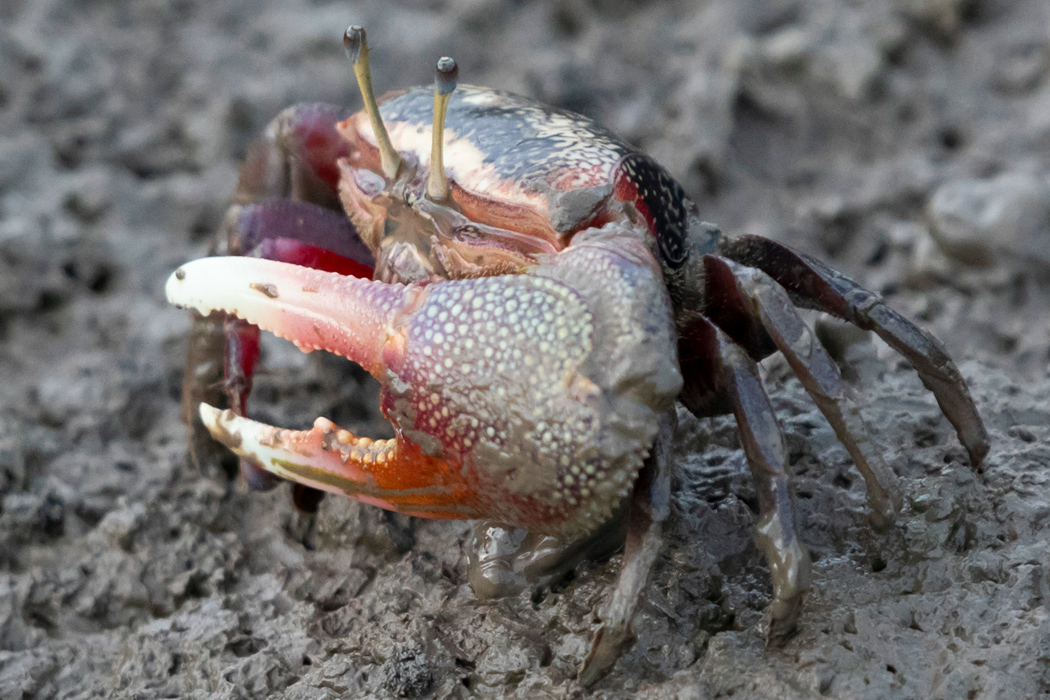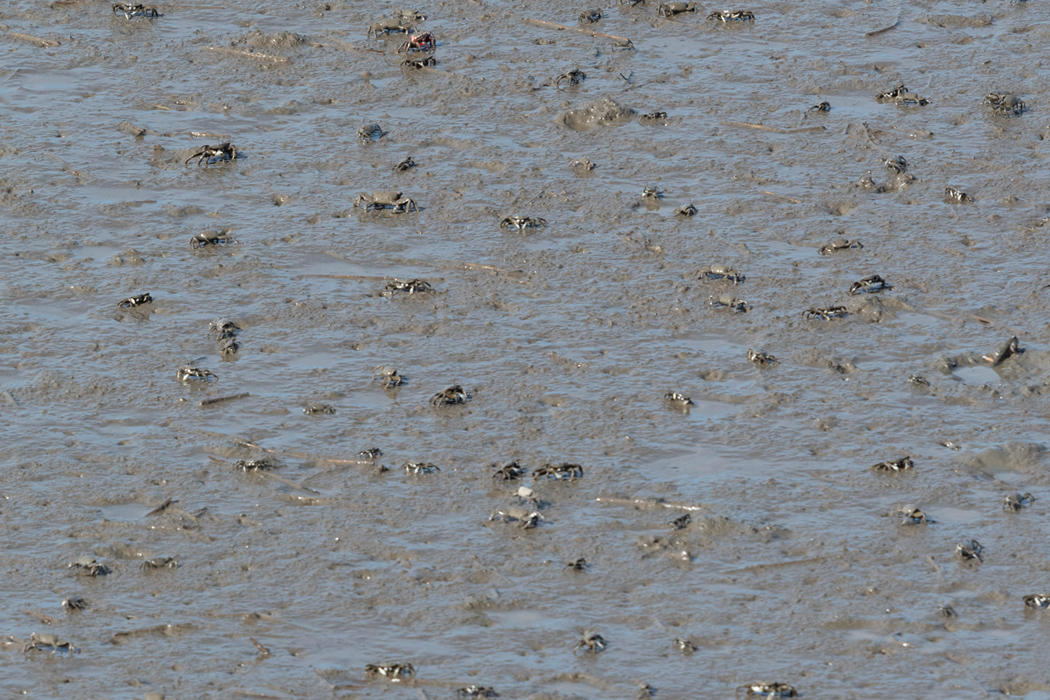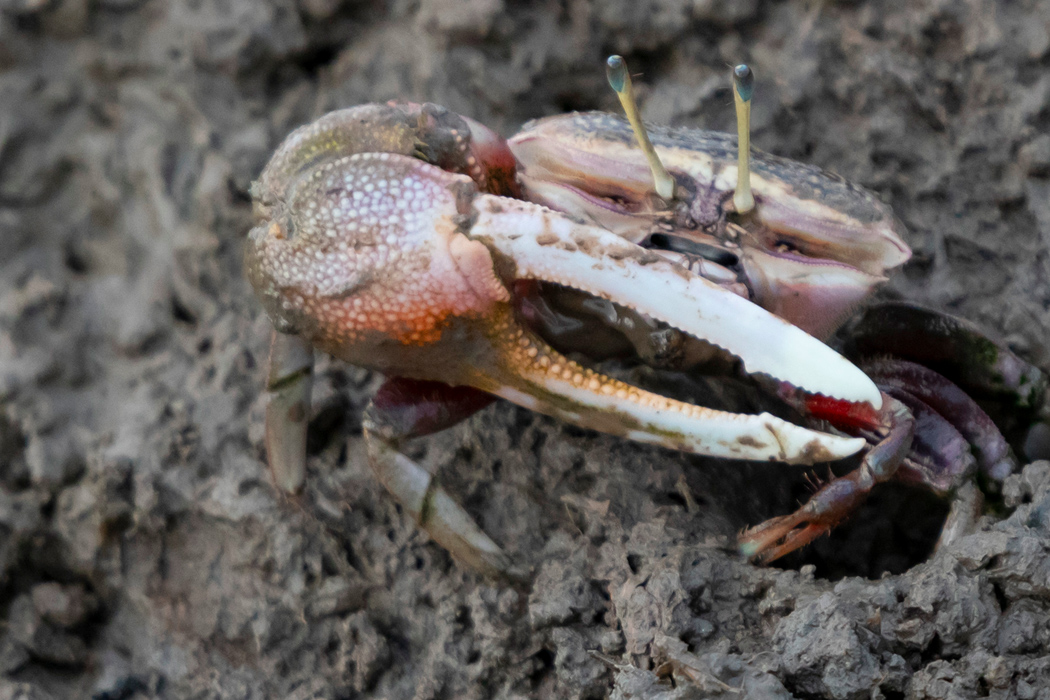
Fiddler crab
Big scissors like pliers are cool
| Scientific name | Uca arcuata |
| English name | Fiddler crab |
| Japanese name | 潮招 |
| Classification | Malacostraca |
| Classification details | Decapoda Ocypodidae |
| Full length | 35mm (crustacean) |
| Distribution | coast west of Shizuoka Prefecture |
Characteristics
A crab belonging to the family Poor crab, in which one of the pincers of the male becomes very large. It is the largest fiddler crab that lives in Japan. The large pincers of the male have a rough surface, and the shape resembles pliers and is powerful. The body has a light red color, but the color becomes difficult to distinguish when covered with mud. The eyes are elongated and green in color, protruding from the center of the shell.
Fiddler crab scissors
Males have one pincer as large as their shell, while females have smaller pincers. This is an easy-to-understand example of sexual dimorphism, where males and females differ greatly in morphology. It is said that the Japanese name "shiomaneki" was given because the male waving his pincers when courting a female seemed to invite the tide to rise. .
Habitat status of fiddler crabs
Their main habitat is tidal flats, but their numbers are declining due to the reduction of tidal flats due to human activities. In 2006, it was upgraded from near-threatened to endangered.
How to eat freshwater crab
It can be eaten boiled in soy or deep-fried.
When I was a child, I also tried to eat it fried. It's delicious if you fry it until it's crispy. If the method of frying is not sufficient, a fishy smell will remain.
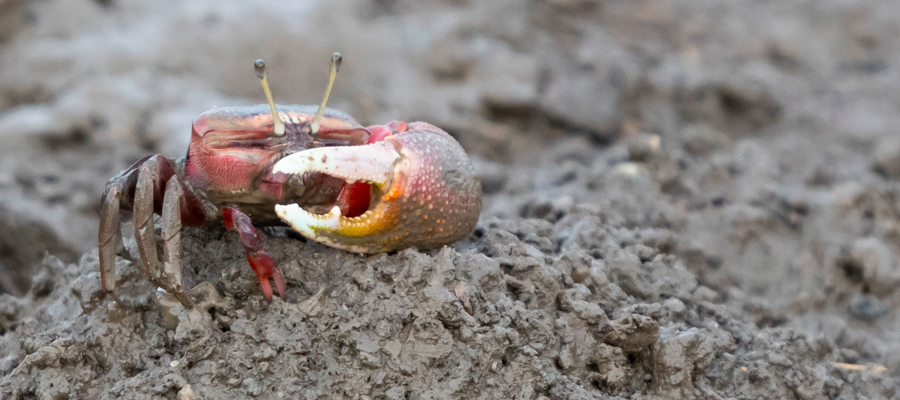
Ecology
Inhabits coastal areas near tidal flats and river mouths. At high tide, they dig burrows that are barely submerged in seawater, and quickly escape from predators such as herons and sandpipers. For food, they mainly eat plankton and detritus in sand and mud, filter them in their mouths, and ingest them.
Habitat
Found in the tidal flats of Higashiyoka tidal flat in Saga Prefecture. There were countless people walking on the tidal flats at low tide. It is very cautious, and when it senses a human approaching, it burrows into its burrow. I was able to observe fiddler crabs, which appeared on the road along the tidal flat and could not return to their burrows, up close. Many herons landed on the tidal flat and were eating something out of the mud. I think fiddler crabs were probably eaten as well. If you use the free telescope on the embankment, you can observe mudskippers and other tidal flat creatures.
Pictures
Introducing a picture of Fiddler crab.

Picture book

Great Crested Grebe
crested grebe......ead more.
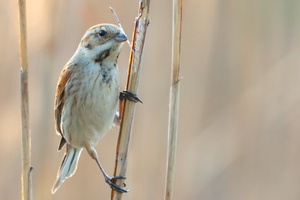
Common Reed Bunting
It stops vertically on thin legs.......ead more.

Red-breasted merganse
Comes to coastal coves in winter.......ead more.

Japanese spine-less cuttlefish
From the spread of discharge that makes your buttocks look like it's burning.......ead more.
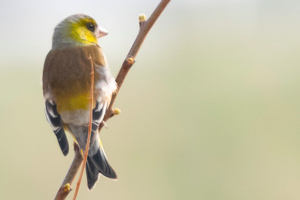
Oriental Greenfinch
Perched on a branch like a bell.......ead more.
